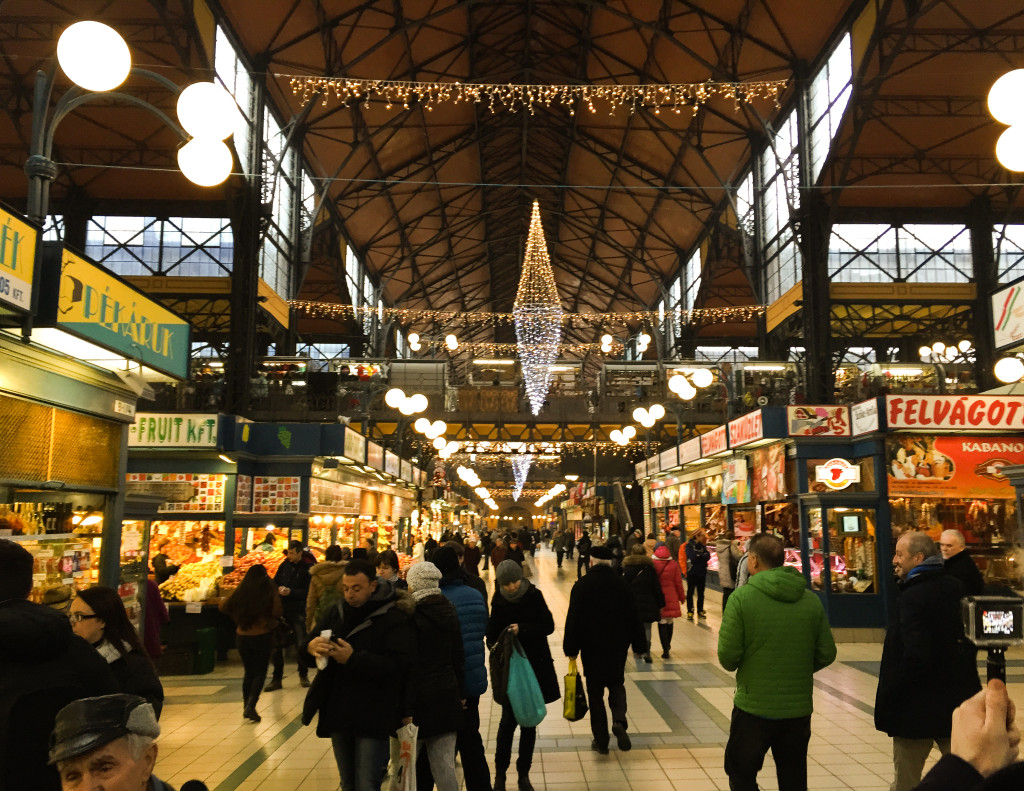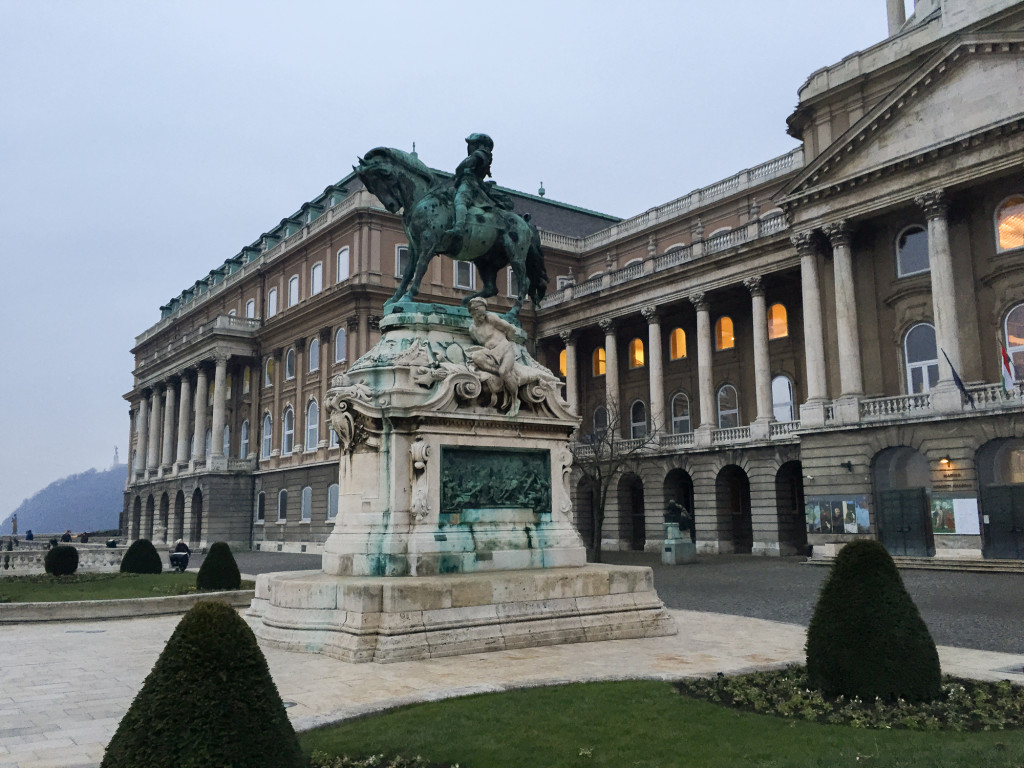After a few days in Belgium we jumped aboard a Ryanair jet bound for Budapest, the Hungarian capital and the 6th most visited city in Europe. I knew little about Budapest and it was never on the top of my list of places to see. I was never expecting to see a city with a unique vibe and so full of grand and beautiful buildings including many UNESCO World Heritage Sites. On Airbnb we found an old apartment in a building that was right on the Danube river which had a view that stretched right across the river to the Hungarian Parliament building. We met the owner, a woman in her 30s who handed us the keys and showed us around.

Our apartment from Airbnb in Budapest.
We decided to cross the bridge and walk over to the Hungarian Parliament building which is one of the most famous landmarks in Budapest. Like a grand castle from a fairy tale, construction was completed in 1904 and ironically the architect went blind before the building was finished. On the side not facing the river, an Honour Guard from the Hungarian Army can be seen marching and standing guard at a large flagpole.




It was then time for some alcohol and to try some of the local food, we hopped on an old school looking yellow trams and enjoyed the scenery until we arrived at the Great Market Hall. This was the oldest and largest market in the city, 3 floors of various stalls housed inside a large complex built around 1897. The Great Market Hall is a the perfect place to buy souvenirs, groceries and try local food.


That night we decided to go and check out the famous Széchenyi thermal baths, the largest medicinal baths in Europe that are supplied by two underground thermal springs. Budapest is also known as the ‘City of Spas’ with its many grand bathing halls. The Széchenyi thermal bath complex is designed in Neo-baroque (old French) style and consists of 3 large outdoor and 15 indoor pools of various temperatures. Don’t let winter stop you from swimming in the heated pools outside, it is an amazing experience relaxing shoulder deep with the steam rising into the cold air, especially at night. We also went to the Gellért Baths which are much more grand and luxurious inside but only have a small outdoor pool.


The Széchenyi baths are located near several other attractions in Budapest and we decided to have a look around before heading back to the apartment. We wandered around in the amazing Vajdahunyad Castle complex, although it appears to be hundreds of years old, the castle was only built in 1896 to celebrate 1,000 years of Hungary since the Hungarian Conquest of the Carpathian Basin in 895. Next to the castle was a massive ice skating rink which was absolutely packed as the skaters enjoyed music played over a loud speaker. A few minutes walk from the ice rink and you will find Heroes’ Square. Featuring the Tomb of the Unknown Soldier and statues of the Seven chieftains of the Magyars, which were the leaders of the seven tribes of the Hungarians at the time of their arrival to the Carpathian Basin in 895 AD.



We walked to the metro station that was back near the baths and as we were buying a ticket the train arrived and we only just made it into the carriage as the doors closed. After a few stations we noticed a plain clothed ticket inspector enter the carriage. She made her way up the aisle until she arrived at our seat and asked us for our tickets. We produced the two tickets we had bought and in broken English she immediately ordered us off the train at the next station. She began examining our tickets and all of a sudden a young Hungarian couple interrupted her and an argument broke out. With some emotion they were debating an issue with her which we did not understand. All of a sudden it hit me, the young couple had been at the same station we had entered the train at and had seen us in a rush. We soon realised that they were trying to help us, but what had we done wrong? The young fellow then turned to us and said in English “Sorry guys, we tried” and then walked away.
The inspector then explained that not only do you have to buy a ticket, you also have to validate it in a small machine that puts a hole in it. I had seen this before in many countries but hadn’t realised it was the system here in Budapest. Because we were in a hurry I didn’t examine the tickets and thought that they were unique for each trip and didn’t require validation. We didn’t have any cash on us and she escorted us to the nearest ATM and made us withdraw what was about $30 AUD. She then scolded us for spending time researching sights to see but for not researching how to properly use the public transport.
The next day was spent wandering around the city centre and then going on quite the adventure. We caught a taxi to the outskirts of the city to explore the Red Star Train Graveyard, which is a large abandoned railway complex housing many old steam locomotives from the communist era. I have written about that trip and included more photos in another post if you are interested. That afternoon we decided to explore the famous Buda Castle complex and caught the funicular (a diagonal tram) up Castle Hill and found ourselves looking at quite a spectacular sight. This historical castle and palace complex once housed Hungarian Kings and parts date back to 1265. This is also one of the best areas to enjoy an aerial view of the city.
















No Comments